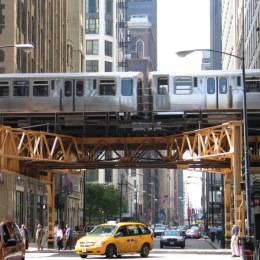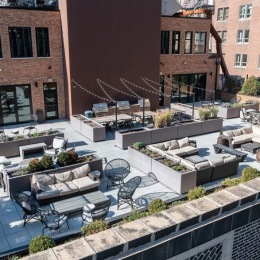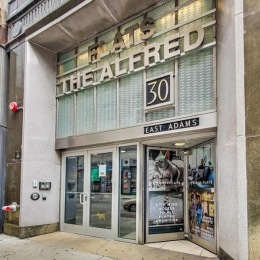Apartment Hunting with Pets? These Complexes Welcome Your Furry Family
Why Pet-Friendly Apartment Living Matters for Urban Renters
Finding an apartment complex pet friendly community means more than just getting permission to bring your furry companion along. It's about finding a place where both you and your pet can thrive in the heart of the city.
Quick Answer: What Makes an Apartment Complex Pet-Friendly?
• Pet Policies: Most allow 1-2 cats or dogs with weight limits (typically 25-100 lbs)
• Fees Structure: Pet deposits, one-time fees, and monthly pet rent
• On-Site Amenities: Dog parks, grooming stations, pet washing areas
• Documentation: Vaccination records, vet health certificates required
• Service Animals: Exempt from fees and breed restrictions under fair housing laws
Nearly all major apartment communities welcome pets today, but the details vary widely. Some charge hefty deposits while others focus on breed restrictions. The best communities go beyond basic acceptance to create spaces where pets are truly part of the lifestyle.
Modern pet-friendly communities offer everything from rooftop dog runs to adoption fee reimbursement programs. They understand that for many urban dwellers, pets aren't just animals – they're family members who deserve quality amenities too.
Whether you're moving with a 100-pound dog or a pair of cats, knowing what to look for can save you time, money, and stress during your apartment search.

What Makes an Apartment Complex Pet Friendly?
The difference between an apartment complex pet friendly in name and one that truly welcomes your furry family members comes down to culture and community. The best places don't just allow pets – they celebrate them as valued residents who deserve thoughtful amenities and clear, fair policies.
Most communities have settled on a standard two-pet limit per apartment, which works well for the majority of pet-owning households. When it comes to species, cats and dogs are universally welcome, though exotic pets like birds, reptiles, or ferrets often require special approval or may be prohibited entirely.
Weight limits vary dramatically across communities. Some stick to conservative 25-pound caps while others welcome dogs up to 100 pounds or eliminate weight restrictions altogether. The trend is shifting toward more flexible policies that focus on individual pet behavior rather than arbitrary size cutoffs.
Breed restrictions remain a reality in many communities, often driven by insurance requirements rather than actual safety data. However, progressive communities are moving toward behavioral screenings instead of blanket breed bans. A well-trained German Shepherd might be a better neighbor than an untrained Chihuahua, after all.
The financial structure tells you everything about a community's commitment to pet ownership. You'll encounter three main types of fees: refundable deposits, one-time non-refundable fees, and monthly pet rent. Communities that view pets as genuine residents tend to have more reasonable fee structures.
What really sets exceptional communities apart are the on-site amenities designed specifically for pets. Think dog parks, grooming stations, pet washing areas, and climate-controlled indoor runs. Some even offer adoption fee reimbursement programs and special move-in gifts for new pet residents.
Service animals enjoy special protections under fair housing laws, exempting them from all fees, deposits, and breed restrictions. Proper documentation is still required, but these working animals have legal rights that pet policies cannot override.
The Core Policies Behind an apartment complex pet friendly Lease
The lease addendum is where pet policies get specific. Dogs and cats are standard across most communities, while exotic pets typically require case-by-case approval. Some communities welcome small caged birds or aquarium fish, while others draw the line at traditional pets.
Size caps represent one of the biggest variables in pet policies. Conservative communities stick to 25-pound limits, moderate ones allow pets up to 50-75 pounds, and the most flexible welcome pets of any size. The key is understanding that these limits often reflect available space and community demographics rather than actual pet behavior.
Temperament checks are becoming the gold standard for responsible pet policies. Instead of making assumptions based on breed, these evaluations focus on how individual pets actually behave. A brief meet-and-greet during the application process helps ensure good matches between pets and community expectations.
Documentation & Approvals You'll Need
Moving in with your pet requires gathering several important documents well in advance. Vaccination records top the list – every community requires proof that your pet is current on rabies, distemper, and other core vaccines recommended by veterinarians.
A health certificate from a licensed veterinarian is equally important, typically dated within 30 days of your move-in date. This document confirms your pet is healthy and free from contagious diseases that could affect other community pets.
Many communities conduct pet interviews, which sound more intimidating than they actually are. These brief meetings let staff observe your pet's temperament and social skills. They're mainly confirming that your pet is house-trained and well-socialized around people and other animals.
Liability insurance isn't universally required but it's worth considering. Some communities mandate it while others simply recommend coverage. Even when optional, pet liability insurance protects you from potential damages or incidents involving your pet.
Fair housing guidelines provide crucial protections for service animals and emotional support animals. These working animals are exempt from pet fees, deposits, and breed restrictions under federal law. Proper documentation is still necessary, but legitimate service animals have legal rights that standard pet policies cannot override.

apartment complex pet friendly: Amenity Checklist
When you're searching for an apartment complex pet friendly community, the amenities can transform your daily routine from stressful to seamless. The difference between a place that simply allows pets and one that truly welcomes them becomes crystal clear when you look at what they offer.
Dog parks are absolutely essential – and we're not talking about a tiny patch of grass with a fence around it. The best communities create dedicated off-leash areas where your pup can run freely, make friends, and burn off energy. Look for thoughtful touches like separate areas for large and small dogs, proper drainage so it's not a mud pit after rain, and plenty of waste stations scattered throughout.
Pet washing stations might seem like a luxury until you need them. Picture this: your dog finds the one muddy puddle in a three-block radius on your morning walk. Instead of wrestling with a squirming, dirty dog in your bathroom, you can head to the community's grooming station with its raised tubs, professional sprayers, and all the supplies you need.
Indoor runs and climate-controlled spaces become lifesavers during Chicago's brutal winters or sweltering summers. Your dog still needs exercise when it's -10 degrees outside, and having a covered area means you won't skip walks when the weather turns nasty.
The most creative communities go beyond the basics with bark parks featuring agility equipment, regular pet events like costume contests or training sessions, and partnerships with nearby trail systems. Some even offer move-in gifts for new pet residents – because who doesn't love a community that welcomes your furry family member with a toy and treats?
apartment complex pet friendly Must-Have Amenities
Some amenities should be deal-breakers if they're missing. An on-site dog park or designated pet area tops this list – without it, you'll spend your days searching for suitable spaces around the neighborhood, which gets old fast.
Pet washing stations protect both your apartment and your sanity. These aren't just convenient; they're practically essential for city living where sidewalks, construction, and urban grime are daily realities for your pet's paws.
Well-maintained waste stations throughout the property signal that management takes cleanliness seriously. If the stations are empty, broken, or sparse, it usually means other aspects of property maintenance might be lacking too.
Climate-controlled exercise areas ensure your pet gets adequate activity year-round. Whether it's covered outdoor runs or indoor spaces, having weather-protected options means consistent exercise routines regardless of what Mother Nature throws at you.
Next-Level Perks That Set Communities Apart
The communities that truly stand out offer services that feel almost too good to be true. Adoption fee reimbursement programs show a genuine commitment to supporting pet adoption – some communities offer substantial reimbursements that can cover most adoption costs.
Mobile grooming services that come directly to the property eliminate the hassle of transporting your pet across town for basic care. Having trusted groomers who know the building and the pets makes the whole experience smoother for everyone involved.
Pet-sitting partnerships or concierge services can be game-changers for busy professionals or frequent travelers. Instead of scrambling to find last-minute care, you have vetted options right at your fingertips.
Treat bars and pet supply stations in lobby areas might seem small, but they show attention to the daily details of pet ownership. Running out of waste bags or wanting to grab a quick treat for your pup becomes effortless when supplies are readily available.
More info about lifestyle perks can help you understand what liftd living looks like when pets are part of the equation.
Comparing Policies, Fees & Restrictions
Navigating apartment complex pet friendly fees can feel like decoding a secret language. Every community seems to have its own approach to pet costs, and understanding these differences upfront can save you from unpleasant surprises later.
The fee structures you'll encounter typically fall into three main categories. Pet deposits are the most common, functioning like a security deposit specifically for your furry friend. Monthly pet rent adds an ongoing cost to your monthly housing expenses. One-time fees cover administrative costs and are usually non-refundable from day one.
What makes this challenging is that communities often mix and match these approaches. One building might charge a hefty deposit but no monthly rent, while another skips the deposit entirely in favor of higher monthly fees. The total cost over your lease term can vary dramatically depending on which structure a community uses.
Regional differences add another layer of complexity. Downtown areas with limited pet-friendly options tend to command higher fees, while communities in more competitive markets might offer incentives to attract pet owners. Some buildings even run special promotions like waived deposits for new residents or adoption fee reimbursement programs.
The key is looking beyond the headline numbers to understand the total cost of pet ownership at each community you're considering.
| Fee Type | Typical Range | Refundable | Notes |
|---|---|---|---|
| Pet Deposit | $300-$500 per pet | Usually | Covers potential damage |
| Monthly Pet Rent | $25-$65 per pet | No | Ongoing monthly cost |
| One-Time Fee | $150-$400 per pet | No | Administrative processing |
Typical Costs to Budget For
When you're crunching numbers for your apartment search, pet deposits in the $300-$500 range are pretty standard across most communities. Think of this as insurance money that you'll hopefully get back when you move out, assuming your pet hasn't turned your apartment into their personal playground.
Monthly pet rent between $25-$65 per pet is where the ongoing costs really add up. This might not sound like much, but over a year-long lease, you're looking at several hundred dollars that won't come back to you. For households with multiple pets, these monthly fees can quickly become a significant part of your housing budget.
One-time fees are the wild card in pet pricing. These non-refundable charges cover things like updating your lease paperwork and setting up your pet's profile in the building's system. While they don't recur monthly, they do add to your move-in costs.
Some communities offer reduced fees for additional pets, recognizing that the paperwork burden doesn't double when you have two cats instead of one. Others charge the same rate regardless, so it's worth asking about multi-pet discounts during your apartment tour.
How Complexes Handle Aggressive Breeds & Behavior Issues
The conversation around breed restrictions is evolving rapidly in the apartment industry. While traditional breed lists still exist at many properties, forward-thinking communities are shifting toward behavior-based evaluations that focus on individual pets rather than making assumptions based on breed alone.
Behavior evaluations are becoming the new standard for assessing pets. These informal meet-and-greets give property staff a chance to observe how your pet interacts with people and their environment. Don't stress about this process – they're mainly looking for basic socialization and house training, not expecting your dog to perform tricks.
Some communities require proof of training for larger dogs or certain breeds. This might mean showing completion certificates from obedience classes or documentation from a professional trainer. It's actually a smart policy that benefits everyone in the building.
Safety protocols focus on practical considerations like leash requirements in common areas, immediate waste cleanup, and noise considerations for your neighbors. These rules protect both pets and residents while maintaining a peaceful living environment.
Contingency clauses in lease agreements provide a fair way to address behavior issues that might arise after move-in. These typically focus on specific problematic behaviors rather than breed characteristics, giving both you and the property management a clear framework for resolving any concerns that come up during your tenancy.
How to Sniff Out the Perfect Home for You & Your Pet
Finding the right apartment complex pet friendly home goes way beyond just seeing "pets welcome" on a website. You'll want to tour properties with your furry friend's daily routine in mind and dig into the details that make the difference between surviving and thriving in city living.
When you're walking through potential homes, take a good look at the flooring. Hard surfaces like luxury vinyl or tile will be your best friend when dealing with muddy paws, water bowl spills, or the occasional accident. Carpet might look cozy, but it's not so forgiving when your puppy decides the living room is their personal bathroom.
Pay attention to the lighting and layout of common areas where you'll be taking your pet multiple times a day. Dark, narrow hallways can be stressful for anxious pets, while well-lit, spacious areas make daily walks more pleasant for both of you.
Even if a community has amazing on-site amenities, check out what's within walking distance. Urban pets need variety in their exercise routine, and having access to nearby parks or trails can make your daily walks much more interesting. Your dog will appreciate new smells and sights beyond the same community dog park every day.
Think practically about elevator access if you're considering upper floors. A tiny elevator with a 100-pound dog and groceries can turn into an awkward puzzle. Also consider emergency situations – how would you safely evacuate with your pets if needed?
Before you fall in love with a place, research the neighborhood's veterinary options. Having quality emergency and routine care nearby isn't just convenient – it's essential for peace of mind when your pet needs attention.
Red Flags When an apartment complex pet friendly Claim Falls Short
Some communities talk a good game about being pet-friendly but don't walk the walk. Watch out for surprise fees that mysteriously appear after you've started the application process. If they're not upfront about all costs from the beginning, what else might they be hiding?
Poorly maintained pet amenities tell you everything you need to know about a community's priorities. A dog park that's always muddy, lacks waste stations, or is clearly an afterthought shows that pets aren't really welcome – they're just tolerated.
Extremely low weight limits like 15 or 20 pounds often signal a community that reluctantly allows pets rather than embracing them. These arbitrary restrictions usually come with a side of constant complaints about pet noise or behavior.
Vague or constantly changing rules are a major red flag. Pet policies should be crystal clear and consistently applied. If the leasing staff can't give you straight answers about what's allowed or what you'll pay, keep looking.
Checklist Before You Sign
Get everything in writing through a detailed pet addendum that spells out every fee, rule, and expectation. This isn't the time to rely on verbal promises or assumptions about what's included.
Document your apartment's condition thoroughly during move-in, especially any existing scratches, marks, or damage that could later be blamed on your pet. Photos are your friend here – take lots of them.
Ask about welcome perks for new pet residents. Many truly pet-friendly communities offer move-in gifts or starter packages for pets. It's a small thing, but it shows how much they value pet owners.
Connect with current residents who have pets if you can. They'll give you the real scoop on how pet-friendly the community actually is, the best walking routes, and any unwritten expectations you should know about.
Frequently Asked Questions about apartment complex pet friendly Living
How many pets can I keep in most communities?
Most apartment complex pet friendly communities stick to a standard two-pet limit per apartment home. This rule typically applies whether you have cats, dogs, or a combination of both. It's a sweet spot that lets you have furry companions without overwhelming the space or your neighbors.
Some communities get more flexible with smaller pets like fish or birds, but the two-pet rule usually covers cats and dogs specifically. You'll occasionally find luxury communities that allow more pets or budget-friendly places that are more restrictive, but two pets is the magic number across the industry.
This limit isn't arbitrary - it balances your desire for animal companionship with practical considerations like noise levels, waste management, and space constraints. After all, nobody wants to live next to an unofficial animal shelter.
Are pet deposits refundable?
Pet deposits are typically refundable, which is great news for responsible pet parents. Just like your security deposit, you'll get this money back as long as your furry friend doesn't cause damage beyond normal wear and tear during your stay.
The key word here is "damage" versus normal living. Scratched floors from claws, chewed baseboards, or carpet stains that won't come out with regular cleaning - those count as damage. But minor scratches on hardwood floors or slight odors that disappear with standard cleaning? That's just normal wear and tear.
During your move-out inspection, the property team will assess any pet-related issues. Document everything when you move in to protect yourself later. Take photos of existing scratches, marks, or any issues that could unfairly be blamed on your pet down the road.
Do service animals pay the same fees?
Service animals get special treatment under fair housing laws - and rightfully so. They're completely exempt from pet fees, deposits, monthly rent, and even breed restrictions that might apply to other pets.
This exemption covers both service animals (trained to perform specific tasks for people with disabilities) and emotional support animals (prescribed by licensed mental health professionals). The law recognizes these animals as necessary accommodations, not lifestyle choices.
Proper documentation is required to qualify for these exemptions. Service animals need documentation of their training and the handler's disability, while emotional support animals require a letter from a licensed mental health professional. Communities cannot charge any fees for legitimate service or emotional support animals, regardless of their regular pet policies.
It's worth noting that while the process requires documentation, legitimate service and emotional support animals receive full protection under federal law.
Conclusion
The journey to finding an apartment complex pet friendly home doesn't have to be overwhelming when you know what to look for. The difference between a community that simply allows pets and one that truly accepts them can transform your daily life in the city.
Today's best communities go far beyond basic acceptance. They create spaces where rooftop dog runs offer skyline views, adoption programs reimburse fees, and pet washing stations make cleanup a breeze. These thoughtful touches show that your furry family member is valued, not just tolerated.
Policies vary dramatically between communities, even on the same block. Pet deposits, monthly rent, and amenity quality can differ by hundreds of dollars and significantly impact your experience. Taking time to compare these details upfront saves stress and money down the road.
The key is asking the right questions during your search. Look beyond the marketing materials to understand the real pet culture. Talk to current residents, inspect the amenities yourself, and make sure the lease terms are crystal clear before signing.
Your search for the perfect pet-friendly home should be exciting, not stressful. When you find a community that genuinely welcomes both you and your companion, city living becomes an trip you can share together.
The Alfred Apartments by Flats® understands that luxury downtown living means creating exceptional experiences for every family member – including the four-legged ones. Our historic Loop location combines Chicago's architectural heritage with modern conveniences designed for today's urban lifestyle.
Whether you're apartment hunting with a gentle giant or a tiny kitten, the right community will make your search smooth and your new home perfect. Your ideal pet-friendly apartment is waiting – now you have all the tools to find it.











